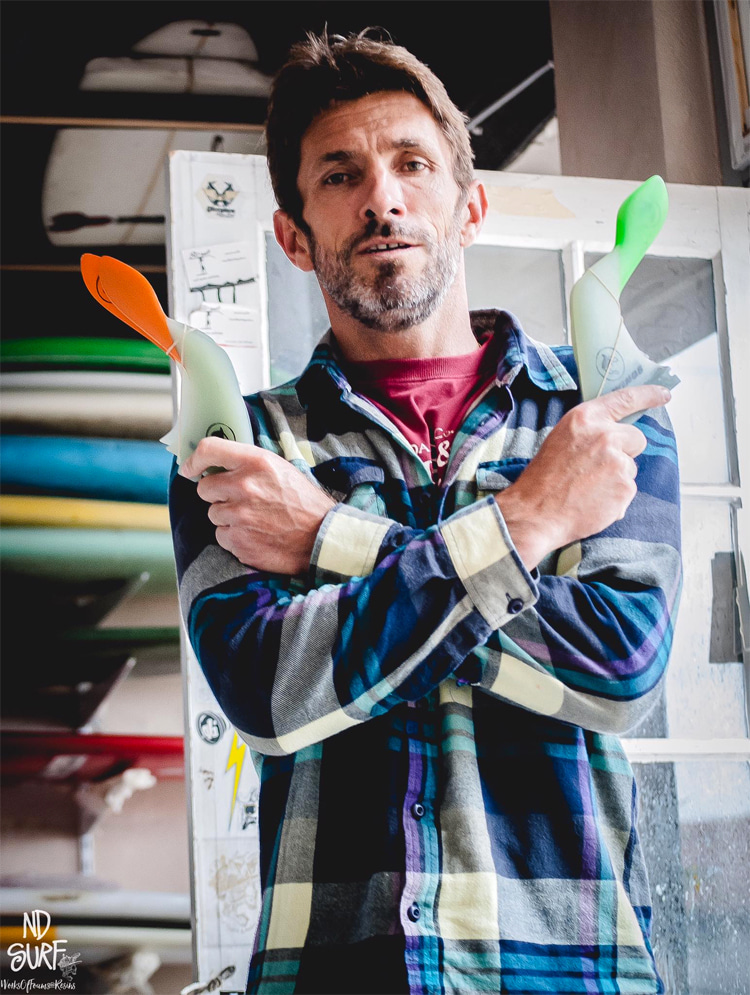For the outsider, surfing seems simple and uncomplicated. However, design and hydrodynamics play a critical role in the surfers' experience. Generally, there's more to it than meets the eye.
If it weren't for innovation, surfboards would continue to be long, heavy, and finless. However, there's nothing 100 years won't evolve.
The surfboard fin industry has undergone several revolutions.
First, it was the single fin. Then, several decades later, came the twin fin - finally, the thruster era and the development of detachable, multi-setup fins.
Apart from minor tweaks, the original shape of the fins, which remind us of dolphin fins, has remained relatively stable.
The 21st century brought a radical rupture, though.
In this quest for improvement, the S-Wings fins have emerged as a groundbreaking innovation in surfboard design.
But what makes them different from the "standard" fin shape?
Biomimetic Design
S-Wings fins are often described as "biomimetic" due to their inspiration drawn from natural fins, particularly those found on fish.
The defining feature of S-Wings fins is their long, drawn-out tip, which sets them apart from standard surfboard fins.
In a thruster setup, both leading fins have these elongated tips foiled on the outside edge, while a smaller trailer middle fin complements them.
For single-fin longboards, the design is similar but foiled on both sides.
The Spring Effect
The biomimetic design of S-Wings fins gives them unique mechanical properties that contribute to enhanced surfing performance.
The shape of the trailing arm of the fin allows water flow to twist it when the surfer angles/carves the board during maneuvers.
This twisting motion provides stability and control as the surfer drives for speed.
When the surfer releases pressure on their feet, the fin returns to its original shape, creating a coil/spring effect that propels the board forward, mimicking the acceleration of a fish's fin.
The length of the trailing arm plays a crucial role in propulsion.
Longer trailing arms offer more propulsion, making them suitable for intermediate-level surfers looking to maximize speed.
Conversely, shorter trailing arms are less propulsive and are favored by experienced surfers seeking control and speed in their maneuvers.
This unusual fin system features two lateral S-Wings, which come into play when the surfer's rear foot is over the central pivot.
This arrangement provides stability during nose-riding, even in turbulent waters, allowing surfers to perform hang tens easily.

The Story of S-Wings
The story of S-Wings began with a chance encounter on social media, where Philippe Gray-Lopez stumbled upon a post by Grant "Twiggy" Baker, showcasing a surfboard by legendary surfers Mark Richards and Cheyne Horan.
This encounter sparked a dialogue on innovative surfboard design, and Philippe proposed a concept of elongated stabilizers with "spatulas," which could provide control during air drops in big wave conditions.
The result was the birth of S-Wings, a design concept that would change the standard shape of surfboard fins.
The fins underwent numerous iterations, with input from experts like Xabi Lafitte and feedback from sessions in diverse surfing conditions.
Throughout their development, S-Wings fins have undergone rigorous testing and refinement in terms of design and materials.
The innovation was recognized and supported through competitions like the Innov Mugabe competition, leading to further advancements in design and production.
S-Wings gained prominence and validation in the surfing community, notably when used by renowned surfers like Tom Curren and Mason Ho, who experienced firsthand the fins' benefits in control, speed, and maneuverability.
